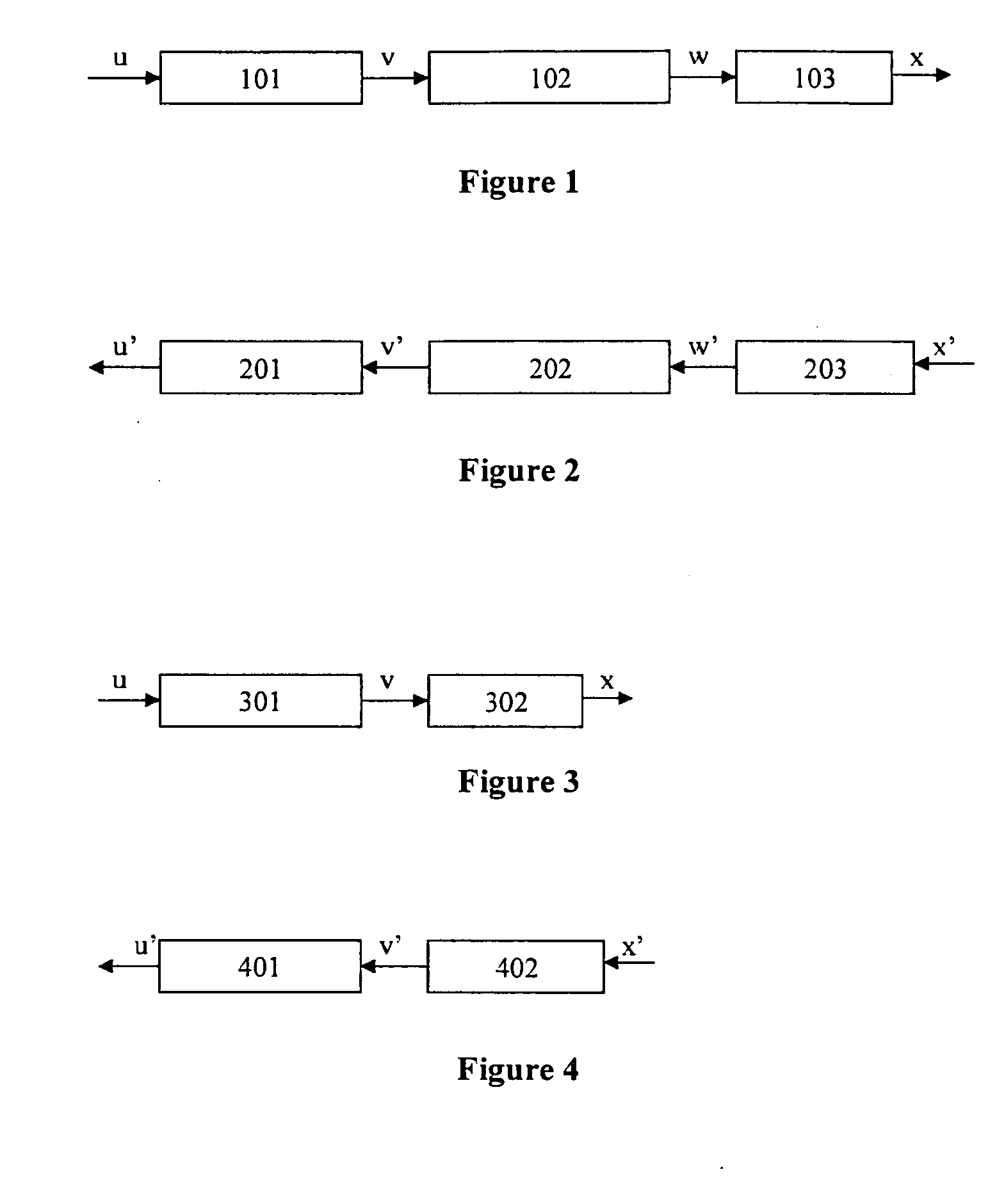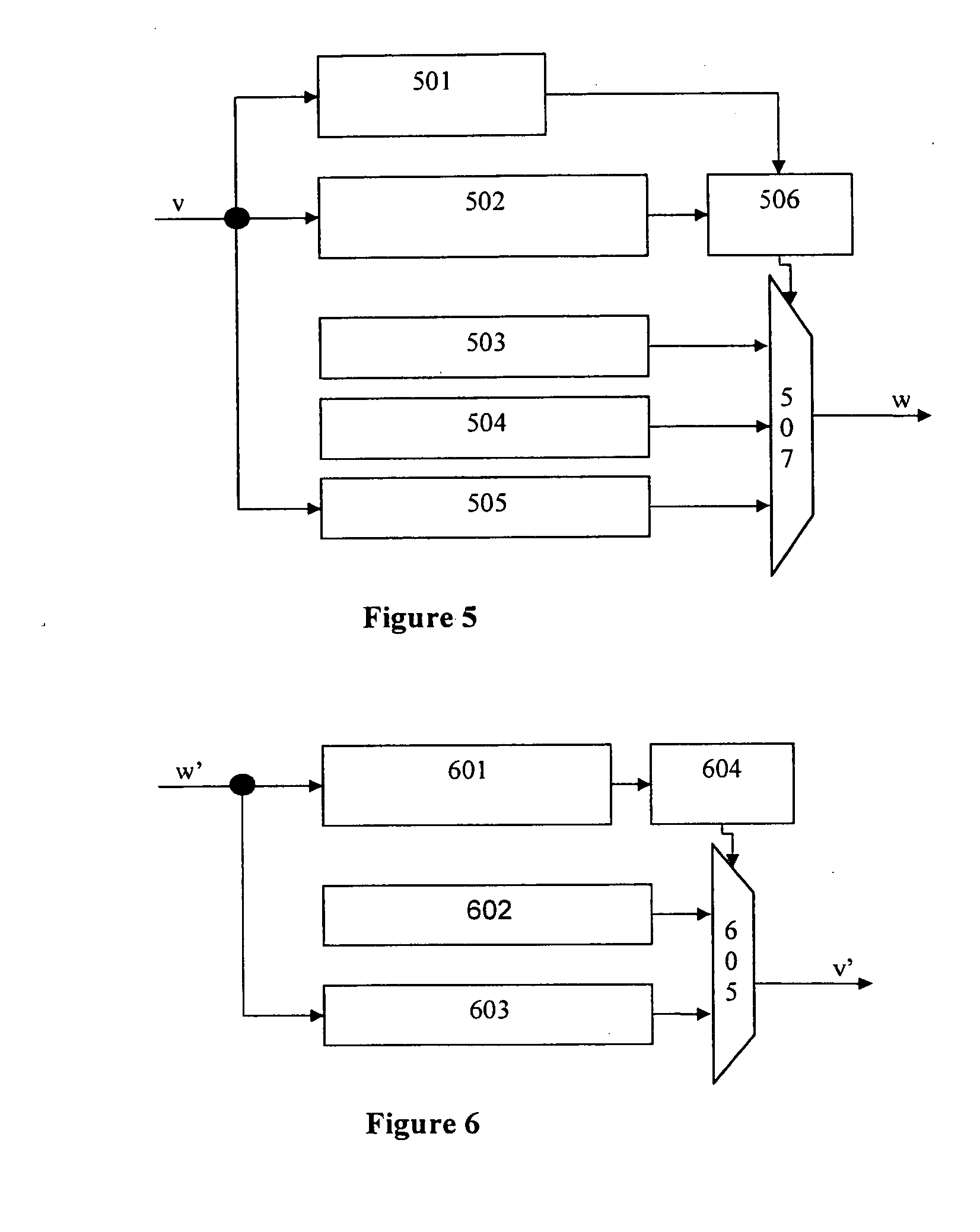Method and apparatus for channel coding and decoding
a channel and channel technology, applied in the field of channel coding and decoding, can solve the problem that nothing is disclosed whether or how the findings can be generalized
- Summary
- Abstract
- Description
- Claims
- Application Information
AI Technical Summary
Benefits of technology
Problems solved by technology
Method used
Image
Examples
Embodiment Construction
[0031]In the prior art RLL-encoder shown in FIG. 3, the dk-encoder 301 does not take care of any RMTR limitation, so that any repetitive pattern of the form
[0](d+1)[1] [[0](d)[1]](ρ) [0](d+1)
having a number ρ, 1≦ρ≦∞ of repeated minimum runlengths might appear in the sequence of constrained tuples v. Among these patterns, the ones having ρ>r are RMTR violating patterns which must be eliminated. In this, the notation “[x](y)” as defined above is used recursively and is generalized by defining that the special case of [x](0) shall be interpreted as the empty string or bitstream, regardless of the value of x.
[0032]FIG. 1 shows a block diagram of an RMTR-obeying RLL-encoder according to the invention. The encoder has a conventional dk-encoder 101 obeying a runlength limitation of (d,k1), and a conventional precoder 103 for the NRZI modulation and mapping. According to the invention, an RMTR-encoder 102 is placed between the dk-encoder 101 and the precoder 103.
From a sequence of data tup...
PUM
 Login to View More
Login to View More Abstract
Description
Claims
Application Information
 Login to View More
Login to View More - R&D
- Intellectual Property
- Life Sciences
- Materials
- Tech Scout
- Unparalleled Data Quality
- Higher Quality Content
- 60% Fewer Hallucinations
Browse by: Latest US Patents, China's latest patents, Technical Efficacy Thesaurus, Application Domain, Technology Topic, Popular Technical Reports.
© 2025 PatSnap. All rights reserved.Legal|Privacy policy|Modern Slavery Act Transparency Statement|Sitemap|About US| Contact US: help@patsnap.com



